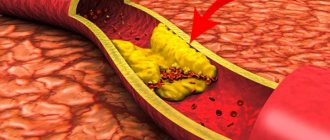Anonymously
Around the clock
Article prepared by an expert
Knoblokh Ekaterina Sergeevna
Leading psychologist of the Center “Zdravnitsa” Medical psychologist, full member of the OPPL, emotional-imaginative therapist. More than 10 years of experience
Read in the article:
- Phenazepam addiction: symptoms and signs
- Symptoms of Phenazepam withdrawal syndrome
- Treatment of addiction to Phenazepam
Phenazepam is a domestically produced tranquilizer that was previously used during surgical interventions as a pain reliever. Currently, doctors prescribe it to treat depression, anxiety, seizures, and epilepsy. It is often used in combination to treat alcohol addiction in order to get rid of withdrawal symptoms. Currently, the medicine is used by drug addicts to achieve a powerful psychoactive effect. Addiction develops rapidly on a psychological and physical level. The choice in favor of this tranquilizer is made due to availability and cost. You can buy it in many pharmacies without a prescription.
Content:
- General information
- Indications for use
- Phenazepam: narcotic effects and psychoneurotic disorders
- Adverse somatic disorders
- Drug addiction
- Side effects of long-term use
- Overdose
Many medications cause narcotic effects. One of them is phenazepam, the side effects of which (various mental disorders, the development of drug addiction) led to the fact that the pharmacy chain began to dispense it only by prescription. But those who like to “expand consciousness” manage to bypass existing prohibitions and use the substance for non-medical purposes.
Symptoms of Phenazepam withdrawal syndrome
Phenazepam withdrawal syndrome is acute and can lead to suicide attempts due to the enormous stress on the psyche. After removing the tranquilizer from the body, the person feels unwell. At first he wants to take the pills again and suffers from depression. Then physical symptoms appear, including joint and muscle pain, migraine, nausea, diarrhea, vomiting, and fever.
Moreover, withdrawal syndrome may appear even when the dose is reduced by 2-3 times. Drug addicts do this to avoid withdrawal. In practice, this leads to serious consequences, including hearing impairment, weakness, insomnia, migraine, itchy skin, and lack of appetite. The symptoms are similar to the flu: sore throat, chills, high fever, weakness. In general, after completely stopping the medication, symptoms will persist for at least a week because over time the drug accumulates in the tissues and is eliminated gradually. If a drug addict has been taking pills for several months, it will take at least 30 days to remove the medication.
General information
The drug belongs to the benzodiazepines. It was synthesized at the end of the last century for use in military medicine, then it was used to treat those addicted to alcohol. Today, the production of phenazepam is prohibited in most countries of the world. It continues to be used as a prescription drug in some post-Soviet countries.
What is the mechanism of action of this drug? It affects the receptors of GABA - gamma-aminobutyric acid, the presence of which determines the processes of excitation and inhibition. Neurons of almost all brain structures are “equipped” with such receptors, so phenazepam affects many of its functions.
Is it possible to get rid of Phenazepam addiction at home?
There is no doubt that most patients who are dependent on chemicals prefer to be treated at home. RC Svoboda offers a service of calling a doctor to your home. If in an emergency the assistance of a doctor is needed, a specialist will immediately respond to the call. It is possible to help a patient at home if his health condition allows for a detoxification course without possible complications. But doctors strongly recommend hospitalization in a clinic if the patient’s condition is serious, he is elderly, and combines taking Phenazepam with drugs and alcohol.
Treatment of drug addiction in a clinical setting is the best way out of the situation. The Svoboda center has the necessary equipment for a full examination of the patient, a detoxification course, and further rehabilitation.
Indications for use
When taking this substance, the following effects develop:
- anti-anxiety;
- anticonvulsant (anticonvulsant);
- hypnotic;
- sedative (calming);
- muscle relaxant (this means muscle relaxation).
Phenazepam is prescribed to patients with diseases that cause:
- anxiety;
- panic attacks;
- fears;
- irritability;
- psycho-emotional instability;
- epileptic seizures;
- insomnia.
Phenazepam: narcotic effects and psychoneurotic disorders
If the medicine is taken in higher dosages, side effects such as:
- positive emotions;
- improved mood despite any life problems;
- feeling of lightness in the body;
- feeling of weightlessness and flight.
If phenazepam is used for a long time, psycho-emotional disorders develop:
- aggression;
- hallucinations;
- mood swings;
- lack of objective perception of the world.
Please note: Lack of control of behavior is characteristic - a drug addict is able to do something that he would not have dared to do before. Psychomotor agitation usually occurs, but emotional retardation may also occur.
Side neurological problems also appear. Often these are failures for which phenazepam is indicated, but in higher dosages it itself provokes them - for example, sleep disorders and convulsions. In addition to them, there are:
- inability to concentrate;
- incoherence of speech;
- memory impairment;
- failure of thinking;
- violation of orientation in space and time;
- dizziness;
- headache;
- trembling of the upper and lower extremities;
- nystagmus is involuntary oscillatory movements of the eyeballs.
Signs of withdrawal
The patient's condition is partly similar to influenza or ARVI. Symptoms of withdrawal after phenazepam are as follows:
- anxiety;
- irritability;
- sleep problems (insomnia, nightmares, frequent awakenings at night);
- heightened hearing;
- pain in muscles, head and throat;
- lack of appetite, nausea, vomiting;
- itching of the skin;
- chills;
- general feeling of weakness;
- aggressiveness;
- dysphoria;
- temporal and spatial disorientation;
- hypotension;
- excessive sweating;
- dizziness;
- tremor;
- increased sensitivity to light and sounds;
- depersonalization;
- anxiety-depressive syndrome;
- dizziness;
- speech problems;
- blurred vision.
Adverse somatic disorders
When taking phenazepam, the time of action on other structures of the body is the same as on the nervous system - its effects appear from 6 to 18 hours (this is the half-life). Then the symptoms weaken.
Somatic disorders are most often observed from:
- cardiovascular system - increased heart rate, hypotension (low blood pressure);
- gastrointestinal tract - dry mouth, impaired bowel movements (evacuation of the large intestine);
- urinary system - irregular urination.
This is a partial description of the effect of phenazepam on humans - other side effects are possible. Characterized by pale skin, hyperhidrosis (excessive sweating). The addict may feel chills. He complains of deterioration in general health, lethargy and weakness.
Drug withdrawal regimen
In order to prevent the development of a pathological syndrome, there are different methods for correctly stopping phenazepam. The simplest and most effective way is to gradually reduce the dosage. Experts recommend reducing the dose of the drug by 10% of the original every two weeks. Thus, you can completely stop taking the drug 5 months after the start of gradual withdrawal.
There are also accelerated regimens that include the prescription of drugs that can “cover up” the absence of phenazepam. These regimens are selected by the attending physician, depending on the pathology for which phenazepam was prescribed.
Drug addiction
She appears quite quickly. First, a mental addiction arises - the addict likes the positive emotions that phenazepam causes, and he does not want to give it up. After 2-3 weeks, a physical addiction forms. The substance becomes part of the metabolism; the body perceives its absence as a violation and reacts with pathological manifestations.
Syndrome o) is associated with physical dependence. It occurs if an addiction has formed, but the addict suddenly stopped using phenazepam. Characteristic:
- irritability;
- tearfulness;
- anxiety;
- depression.
A drug addict suffers from insomnia, and if he manages to fall asleep, he has nightmares. The person is extremely tense, he develops various fears and paranoid reactions (increased suspicion). Appetite disappears, body weight gradually decreases.
Why does psychological dependence on Phenazepam occur?
Psychological dependence occurs for various reasons, but they are similar to those for which a person starts using drugs. There are several reasons for psychological cravings for chemicals that give a feeling of lightness, joy and happiness. Among the factors that lead a person to drugs and addiction to them are:
- excessive care of a teenager;
- cases of domestic violence;
- dissatisfaction with life;
- unprocessed internal conflicts;
- lack of interests, hobbies;
- decreased self-esteem;
- boredom and laziness, reluctance to study and work;
- hereditary predisposition.
In addition, a person tries to reduce the degree of anxiety and fear with a tranquilizer. The sedative effect of Phenazepam eliminates negative sensations, but when administered uncontrolled and independently, it is addictive. Therefore, it is necessary to control the intake of the drug and be wary of becoming dependent on it. Not all people who crave this substance are considered drug addicts. Many, due to their negligence, experience addiction because they prescribed this drug to themselves, without consulting a specialist, or began to increase the dose and frequency of taking pills.
Thus, among the psychological causes of dependence on Phenazepem, stress, anxiety, and panic can be identified. The person tried to eliminate these negative manifestations by taking medication, but it had the opposite effect. There is no need to despair: you need to contact the Svoboda RC to get rid of a painful and dangerous addiction. This should be done in a timely manner, since ignoring the problem leads to withdrawal symptoms, overdose, and physical health problems.
Side effects of long-term use
The body develops an insensitivity to phenazepam. This means that after a certain time, the effects it causes wear off. It is difficult for a person without positive emotions, and he increases the dosage. In response to this, tolerance increases even more.
With long-term use, the drug has side effects such as:
- constant weakness;
- deterioration in working capacity - intellectual and physical;
- psycho-emotional instability;
- increasing intellectual impairment.
The picture of physical exhaustion is complemented by mental exhaustion. The person becomes depressed, silent, and develops a depressive state. Suicidal thoughts may appear.
PsyAndNeuro.ru
Current recommendations indicate the need to treat with benzodiazepines for a short period of time, without extending their use over a long period of time. However, in reality, doctors and patients do not always follow the recommendations. Long-term use of benzodiazepines leads to addiction. In such cases, stopping benzodiazepines becomes difficult.
To prevent withdrawal symptoms, a gradual dose reduction is usually recommended. Sometimes slow tapering takes months or even years, although there is no evidence that this slow tapering off of benzodiazepines is any better than a faster taper.
Withdrawal symptoms often resemble those of the conditions for which benzodiazepines were prescribed. Moreover, symptoms may return in a more severe form.
Added to this is the development of tolerance to benzodiazepines, which are taken to improve sleep and reduce anxiety. Over time, patients must increase the dose to obtain the desired effect.
There is currently no scientific consensus on how to pharmacologically facilitate benzodiazepine cessation. A drug or set of drugs is required that will solve several problems: remove the physical symptoms of withdrawal syndrome (tremor, tachycardia), improve the patient’s psychological state, reduce anxiety and normalize sleep.
The Cochrane Library has published a review of the use of various drugs in the treatment of benzodiazepine dependence.
The review included 38 randomized controlled trials (RCTs) with a total number of participants exceeding 2500. All of them took benzodiazepines for more than two months in a row and some were diagnosed with benzodiazepine dependence. The average age of participants was 50 years, and the majority of RCTs were female.
The studies reviewed by the review authors indicated potential beneficial effects of some drugs. First, valproic acid and tricyclic antidepressants helped stop benzodiazepines. Secondly, a number of drugs alleviated withdrawal symptoms: pregabalin, captodiam, paroxetine, tricyclic antidepressants and flumanesil. Third, several drugs reduced anxiety: carbamazepine, pregabalin, captodiam, paroxetine, and flumanesil. However, flumanesil could, on the contrary, increase the withdrawal syndrome. One study had to be stopped prematurely because flumanesil worsened symptoms of panic disorder.
A drug has been found that works the worst when withdrawing benzodiazepines, and also increases the withdrawal syndrome. This is alpidem, and, according to the authors of the review, further study of its role in benzodazepine withdrawal is not worthwhile. Almost as useless in this context is magnesium aspartate.
The effectiveness of individual drugs in solving this problem has already been tested. In 2006, a review of studies on the use of carbamazepine in benzodiazepine withdrawal was published. The conclusions of that review were that there is a positive effect, but more RCTs are needed.
Also in 2006, data were published that imipramine helps get rid of benzodiazepine addiction. The Cochrane review also noted the potential benefits of tricyclic antidepressants.
The final conclusion is that not a single pharmacological method of treating benzodiazepine dependence with proven effectiveness has yet been identified. For all drugs tested, the level of evidence was assessed by the review authors as low or very low. This is mainly due to the small scale of the RCTs and the conflict of interest that arose due to the fact that the RCTs were funded by pharmaceutical companies.
Thus, the question of effective pharmacological assistance to patients accustomed to taking benzodiazepines remains open.
The material was prepared with the support of the Doctor SAN clinic, a leading private psychiatric clinic and one of the best drug treatment hospitals in the North-West region.
Prepared by: Filippov D.S.
Source: Baandrup L, Ebdrup BH, Rasmussen JØ, Lindschou J, Gluud C, Glenthøj BY. Pharmacological interventions for benzodiazepine discontinuation in chronic benzodiazepine users. Cochrane Database of Systematic Reviews 2021, Issue 3. Art. No.: CD011481
Overdose
If the body develops tolerance to phenazepam, the effect of the drug weakens - the addict is forced to take an increased dose. This may lead to an overdose. First of all, it is evidenced by:
- increased heart rate;
- hypotension;
- respiratory depression;
- impaired reflexes;
- deterioration in the reaction of the pupils to a light stimulus;
- darkness of consciousness.
Severe side effects are also common - hallucinations, convulsions, delusional reactions. If the addict is unable to stop and continues to take phenazepam, a coma occurs very quickly, which leads to death.
How to deal with addiction to Phenazepam?
A prerequisite for successful treatment in this direction is that the person clearly understands his illness, accepts it, and firmly decides to fight it.
At the first stage of treatment - detoxification of the body, few addicts think about further treatment. Much depends on a person’s family and close circle. With their support and persuasion, the patient can change his mind and make a strong-willed, conscious decision to continue the necessary treatment at the Svoboda RC. Only by going through all its stages, including rehabilitation, is it possible to get rid of painful cravings, both on the physical and psychological level. Specialists from RC Svoboda will help you get rid of addiction. If the need arises, potential patients, relatives, loved ones, and representatives can contact the clinic and get answers to all questions. It is necessary to save yourself from Phenazepam, but by professional methods, with the help of doctors. No self-medication methods can replace competent drug treatment.
Literature:
- The danger of phenazepam as a street drug / Chekulaev Matvey Igorevich, Maksimova Tatyana Vladimirovna, Barsegyan Samvel Serezhaevich / 2015 / Medical and pharmaceutical journal “Pulse”.
- Phenazepam: 25 years in medical practice / S. B. Seredenin [et al.]. - Moscow: Nauka, 2007. - 380 p.
- Pharmacology of sleeping pills: a textbook for students in the specialty programs “General Medicine”, “Pediatrics”, “Pharmacy” / [I. A. Vinogradova, V. D. Yunash, S. V. Goranskaya, etc.] ; Ministry of Science and Higher Education of the Russian Federation, Federal State Budgetary Educational Institution of Higher Education "Petrozavodsk State University". — Petrozavodsk: PetrSU Publishing House, 2021. — 42 p.
How to relieve withdrawal from Phenazepam?
How to get rid of addiction to Phenazepam? It is necessary to relieve withdrawal from the drug and alleviate the painful symptoms of its withdrawal. RC Svoboda offers comprehensive treatment for Phenazepam addiction, which includes the following methods:
- Carrying out a detoxification course. The process involves cleansing the body of drug residues and normalizing the functioning of all body systems. In fact, the person experiences relief, the physical craving for the medicine is relieved. But the psychological one remains, so the second stage of complex treatment for addiction is the formation of a person’s motivation for a sober life.
- Motivation. Bringing an addict out of withdrawal or undergoing a detoxification course does not mean full-fledged treatment. This is the first step to getting rid of addiction. Forming a belief in the need for treatment is the task of this stage.
- It is possible to get rid of addiction completely and start life anew by going through the rehabilitation stage. Treatment is long-term, taking several months. The process uses internationally recognized methods for the rehabilitation of drug addicts, which have been producing results in the treatment of various types of addictions for many years. The patient undergoes rehabilitation at the clinic, attends both group classes and individual sessions with a psychotherapist.
Full treatment of addiction to Phenazepam is the key to getting rid of painful cravings!











